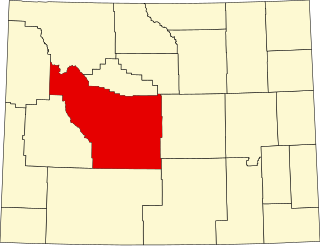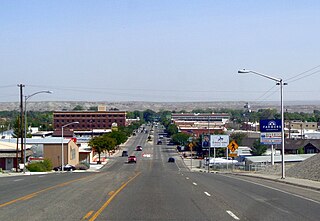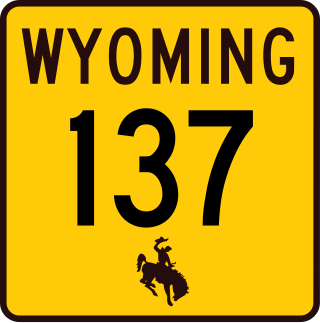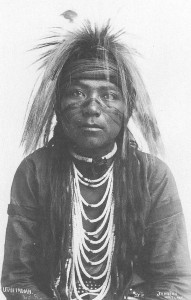Related Research Articles

Wyoming is a landlocked state in the Mountain West subregion of the Western United States. It borders Montana to the north and northwest, South Dakota and Nebraska to the east, Idaho to the west, Utah to the southwest, and Colorado to the south. With a population of 576,851 in 2020, Wyoming is the least populous state despite being the 10th largest by area, with the second-lowest population density after Alaska. The state capital and most populous city is Cheyenne, which had a population of 65,132 in 2020.

Natrona County is a county in the U.S. state of Wyoming. As of the 2020 United States Census, the population was 79,955, making it the second-most populous county in Wyoming. Its county seat is Casper.

Fremont County is a county in the U.S. state of Wyoming. As of the 2020 United States census, the population was 39,234, making it the fifth-most populous county in Wyoming. Its county seat is Lander. The county was founded in 1884 and is named for John C. Frémont, a general, explorer, and politician. It is roughly the size of the state of Vermont.

Lander is a city in Wyoming, United States, and the county seat of Fremont County. It is in central Wyoming, along the Middle Fork of the Popo Agie River, just south of the Wind River Indian Reservation. It is a tourism center with several nearby guest ranches. Its population was 7,546 at the 2020 census.

Riverton is a city in Fremont County, Wyoming, United States. The city's population was 10,682 at the 2020 census, making it the most populous city in the county.
The Shoshone or Shoshoni are a Native American tribe with four large cultural/linguistic divisions:

The Wind River Indian Reservation, in the west-central portion of the U.S. state of Wyoming, is shared by two Native American tribes, the Eastern Shoshone and the Northern Arapaho. Roughly 60 mi (97 km) east to west by 50 mi (80 km) north to south, the Indian reservation is located in the Wind River Basin, and includes portions of the Wind River Range, Owl Creek Mountains, and Absaroka Range.
Missing white woman syndrome is a term used by some social scientists and media commentators to denote perceived disproportionate media coverage, especially on television, of missing-person cases toward white females as compared to males, or females of color. Supporters of the phenomenon posit that it encompasses supposed disproportionate media attention to females who are young, attractive, white, and upper middle class. Although the term was coined in the context of missing-person cases, it is sometimes used of coverage of other violent crimes. The phenomenon has been highlighted in the United States, Canada, the United Kingdom, Australia, New Zealand, and other predominantly white countries, as well as South Africa.
Native American women encounter a disproportionate level of sexual violence from verbal abuse to physical harm, including but not limited to domestic and sexual assaults. Such violations not only result in lasting detrimental effects on the individuals subjected to them but also reverberate throughout their entire community, exacerbating social challenges.
Cale Case is an American economist, businessman, and politician from Wyoming. A Republican, Case has been a member of the Wyoming State Senate since 1999. From 1994 to 1998, he was a member of the Wyoming House of Representatives.

The following is an alphabetical list of articles related to the U.S. state of Wyoming.

James Trosper is the current Eastern Shoshone Sun Dance chief. He is widely regarded as “a respected voice on traditional Plains Indian spirituality.” He is Director of the High Plains American Indian Research Institute. HPAIRI facilitates a wide variety of partnerships between the University of Wyoming and the tribes of the Wind River Indian Reservation in Fort Washakie, Wyoming “to work together in ways that empower tribes, nurture innovation for American Indian sustainability, and demonstrate respect for Native peoples’ cultures, traditions, laws, and diverse expressions of sovereignty.”

The 2010 Wyoming gubernatorial election was held on Tuesday, November 2, 2010, to elect the governor of Wyoming. Party primaries were held on August 17.
Same-sex marriage has been legally recognized in Wyoming since October 21, 2014. The U.S. state of Wyoming had previously prohibited state recognition of same-sex marriages by statute since 1977 and had enacted a more explicit ban in 2003. An attempt to enact legislation recognizing domestic partnerships as an alternative to marriage for same-sex couples failed in 2013. On October 17, 2014, a federal district court found the state's ban on same-sex marriage unconstitutional. Its ruling took effect on October 21 when state officials notified the court that they would not appeal the decision.

Wyoming Highway 137 was a 8.79-mile-long (14.15 km) east–west Wyoming State Road in central Fremont County.

The North Dakota oil boom was the period of rapidly expanding oil extraction from the Bakken Formation in the state of North Dakota that lasted from the discovery of the Parshall Oil Field in 2006, and peaked in 2012, but with substantially less growth noted since 2015 due to a global decline in oil prices.

Missing and Murdered Indigenous Women (MMIW), also known as Missing and Murdered Indigenous Women and Girls (MMIWG) and more broadly as Missing and Murdered Indigenous Relatives (MMIR) or Missing and Murdered Indigenous People (MMIP), are instances of violence against Indigenous women in Canada and the United States, notably those in the First nations in Canada and Native American communities, but also amongst other Indigenous peoples such as in Australia and New Zealand, and the grassroots movement to raise awareness of MMIW through organizing marches; building databases of the missing; holding local community, city council, and tribal council meetings; and conducting domestic violence trainings and other informational sessions for police.

Savanna's Act or the #MMIW Act reforms law enforcement and justice protocols appropriate to address missing and murdered Native women, and for other purposes. An initial version of the bill passed the Senate on December 6, 2018. It was held by Bob Goodlatte on December 10, 2018.

The epidemic of missing and murdered Indigenous women (MMIW) is not exclusive to any region of the United States, but some states have a higher number of cases. Utah ranked 8th in the United States for the number of missing and murdered Indigenous women. The state's capital, Salt Lake City, was the city with the 9th highest number of cases of MMIW.

Friday (Arapaho: Teenokuhu or Warshinun, also known as Friday Fitzpatrick, was an Arapaho leader and interpreter in the mid to late 1800s. When he was around the age of eight, he was separated from his band and was taken in by a white trapper. During the next seven years, he was schooled in St. Louis, Missouri and went on trapping expeditions with his informally adopted father, Thomas Fitzpatrick. After he was recognized by his mother during an encounter with the Arapaho, he returned to the tribe.
References
- ↑ "Wind River Agency | Indian Affairs". www.bia.gov. Retrieved 2023-03-19.
- 1 2 3 4 5 6 7 Missing & Murdered Indigenous People. Wyoming Survey and Analysis Center. January 7, 2021.
- ↑ "Prejudice and the issue of missing Native American women". Denver 7 Colorado News. 2023-01-09. Retrieved 2023-03-17.
- ↑ Vlamis, Kelsey. "710 Indigenous people, mostly girls, were reported missing over the past decade in Wyoming, the same state where Gabby Petito reportedly disappeared". Insider. Retrieved 2023-03-17.